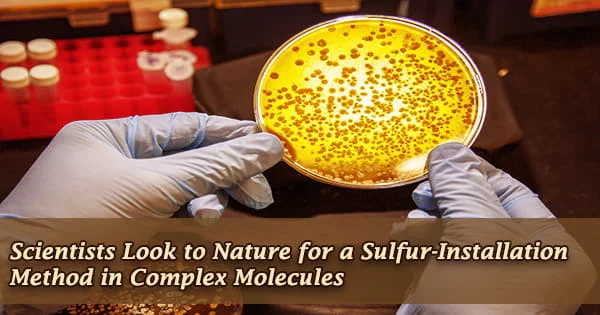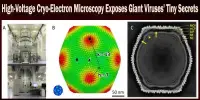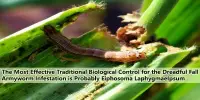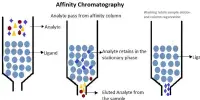Because of their significance in nature and how they interact with proteins to modify their structure and function, impacting health, aging, and disease processes, a category of highly reactive chemicals known as persulfides has piqued biochemists’ interest.
However, due to the chemical’s volatility, studying persulfides and their consequences has proven difficult. Before they can be properly examined, persulfides desire to react with surrounding molecules as soon as they are formed.
Recent research from Scripps Research’s Florida campus, published in Nature Communications on Sept. 28 (2021), uncovers a previously unknown way that nature overcomes this difficulty and makes use of persulfides by producing helpful enzymes that aid in sulfur placement.
Researchers now have a new way for producing potentially crucial sulfur-based compounds in the lab, as well as an explanation to one of nature’s most interesting biological mysteries: In the first place, how does sulfur become incorporated into complex molecules?
According to Ben Shen, professor and chair of the Scripps Research Department of Chemistry in Jupiter, Florida, and senior author of the work, sulfur is the fifth most abundant element in life, yet nature employs a very restricted number of methods to install it into tiny molecules.
Given such restricted methods, Shen has long puzzled how sulfur atoms might become integrated into the structure of intriguing chemicals he examined, such as guangnanmycin and leinamycin.
Leinamycin is a natural compound with antibacterial and anticancer effects that was first identified in 1989. Shen and his colleagues found hundreds of members of what is truly a large family of leinamycin variations in nature in 2017 with the aid of their increasing collection of microbial strains. Shen discovered that the anticancer action of leinamycin is dependent on its two sulfurs.
Scripps Research Florida’s recent acquisition of one of the world’s biggest microbial strain collections provided Shen’s team with a new approach to examine the question: a targeted search for novel enzymes, nature’s catalysts. Growing bigger numbers of the strains of interest, then sequencing and analyzing their genetic material for telltale indications of enzymes, is part of this process.
“We have now discovered a new mechanism by which nature installs two sulfur atoms into a small molecule at the same time, overcoming the long-lasting challenge in their instability,” Shen says. “This discovery exemplifies the potential of our natural product strain collection and how it enables us to do things differently.”
More than 125,000 bacterium strains were gathered by research groups throughout the world over the decades after streptomycin was discovered, according to the natural product collection at Scripps Research in Florida. To live in a hostile and competitive world, soil bacteria must evolve a broad range of biologically active natural compounds.
“Those natural products have enormous potential to act as medicines or serve other purposes if they can be discovered, studied, and understood,” Shen says. According to Song Meng, PhD, the primary author of the paper, constructing these compounds requires bacteria to function as chemists, developing sometimes novel mechanisms such as new catalytic enzymes.
“The study of natural products allows us to explore how nature uses simple building blocks to build up the most complex structures humanity has ever seen, which provides opportunities for enzyme discovery and potential impact throughout the entire field of organic chemistry,” Meng says.
The researchers in Shen’s group want to inspire future efforts in disciplines as diverse as microbiology, biotechnology, organic chemistry, and medicinal chemistry by studying how Nature creates natural products. Meng and Andrew Steele, PhD, study coauthors, remembered the moment they realized they’d made it.
“We had been working tirelessly to make unstable persulfides. They degrade into smelly hydrogen sulfide, so the first time that we smelled rotten eggs we knew that we had made a breakthrough,” Steele says.
Soon after, they identified the thiocysteine lyases, a previously unknown family of enzymes that nature employs to create persulfides, which are used as essential intermediates in the production of the whole leinamycin family of natural compounds. According to Edward Kalkreuter, PhD, a co-author on the study, “the natural goods collection has been the key to their success.”
“While traditionally only one biosynthetic pathway could be studied at a time, our strain collection now allows us to discover evolutionarily related families, thereby comparing and evaluating many similar pathways at once,” he adds.
They go on to say that the enzymes that enable persulfide production are expected to have a wide range of possible uses in the future.
“Persulfides have been found in numerous fundamental and disease-related biochemical systems, but the field of synthetic chemistry has only a few specialized methods at its disposal to generate them,” Steele says. “We found nature has provided us with a solution to tackle this problem.”
According to the researchers, the new finding expands the toolkit needed to build sulfur-containing compounds and paves the door for synthetic biologists to create whole new classes of molecules that will have an influence on chemistry, biology, and medicine.
“I tell my students if you want to discover something, find how nature does it, that can present a solution,” Shen says.
In addition to Shen, Meng, Steele and Kalkreuter, the other authors of the study, “Thiocysteine lyases as polyketide synthase domains installing hydropersulfide into natural products and a hydropersulfide methyltransferase,” include Wei Yan, Guohui Pan, Yu-Chen Liu and Zhengren Xu, all of Scripps Research in Jupiter, Florida.
Funding for the study was provided by the National Institutes of Health, (GM134954). A.D.S. and E.K. are supported in part by NIH Postdoctoral fellowships (GM133114 and GM134688). W.Y. is supported in part by the Nanjing Agricultural University, Nanjing, China, and a scholarship from the Chinese Scholarship Council.
















